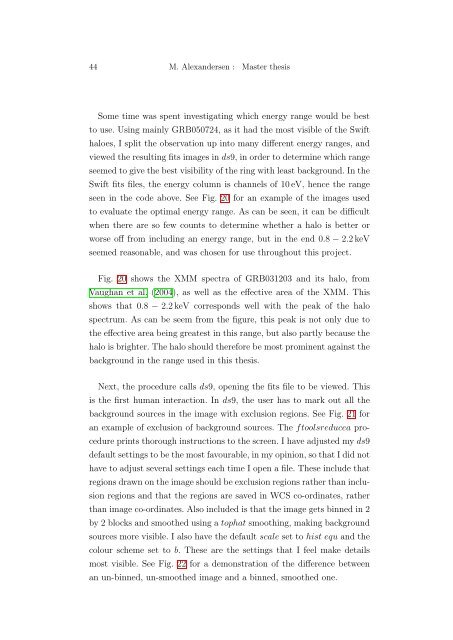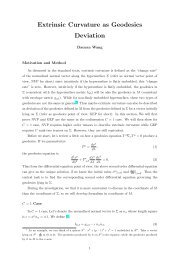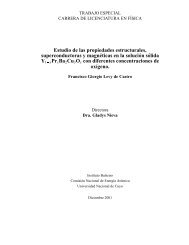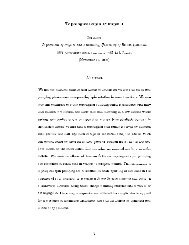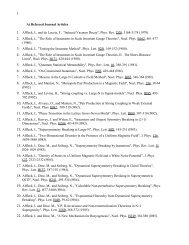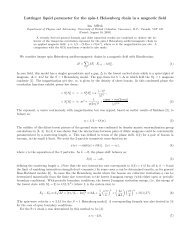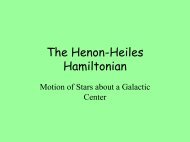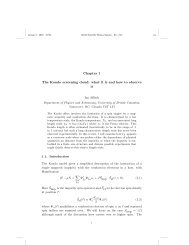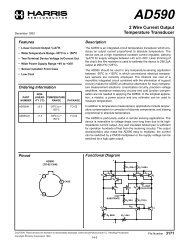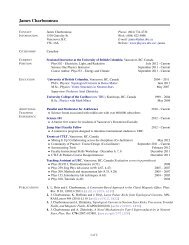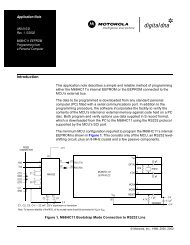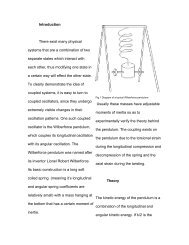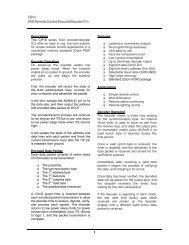Master thesis - UBC Physics & Astronomy
Master thesis - UBC Physics & Astronomy
Master thesis - UBC Physics & Astronomy
You also want an ePaper? Increase the reach of your titles
YUMPU automatically turns print PDFs into web optimized ePapers that Google loves.
44 M. Alexandersen : <strong>Master</strong> <strong>thesis</strong><br />
Some time was spent investigating which energy range would be best<br />
to use. Using mainly GRB050724, as it had the most visible of the Swift<br />
haloes, I split the observation up into many different energy ranges, and<br />
viewed the resulting fits images in ds9, in order to determine which range<br />
seemed to give the best visibility of the ring with least background. In the<br />
Swift fits files, the energy column is channels of 10 eV, hence the range<br />
seen in the code above. See Fig. 20 for an example of the images used<br />
to evaluate the optimal energy range. As can be seen, it can be difficult<br />
when there are so few counts to determine whether a halo is better or<br />
worse off from including an energy range, but in the end 0.8 − 2.2 keV<br />
seemed reasonable, and was chosen for use throughout this project.<br />
Fig. 20 shows the XMM spectra of GRB031203 and its halo, from<br />
Vaughan et al. (2004), as well as the effective area of the XMM. This<br />
shows that 0.8 − 2.2 keV corresponds well with the peak of the halo<br />
spectrum. As can be seem from the figure, this peak is not only due to<br />
the effective area being greatest in this range, but also partly because the<br />
halo is brighter. The halo should therefore be most prominent against the<br />
background in the range used in this <strong>thesis</strong>.<br />
Next, the procedure calls ds9, opening the fits file to be viewed. This<br />
is the first human interaction. In ds9, the user has to mark out all the<br />
background sources in the image with exclusion regions. See Fig. 21 for<br />
an example of exclusion of background sources. The ftoolsreducea procedure<br />
prints thorough instructions to the screen. I have adjusted my ds9<br />
default settings to be the most favourable, in my opinion, so that I did not<br />
have to adjust several settings each time I open a file. These include that<br />
regions drawn on the image should be exclusion regions rather than inclusion<br />
regions and that the regions are saved in WCS co-ordinates, rather<br />
than image co-ordinates. Also included is that the image gets binned in 2<br />
by 2 blocks and smoothed using a tophat smoothing, making background<br />
sources more visible. I also have the default scale set to hist equ and the<br />
colour scheme set to b. These are the settings that I feel make details<br />
most visible. See Fig. 22 for a demonstration of the difference between<br />
an un-binned, un-smoothed image and a binned, smoothed one.


